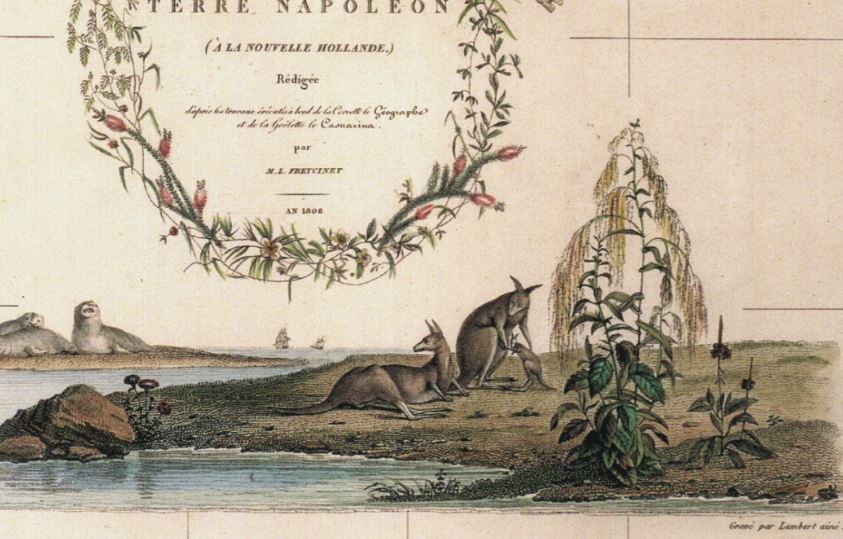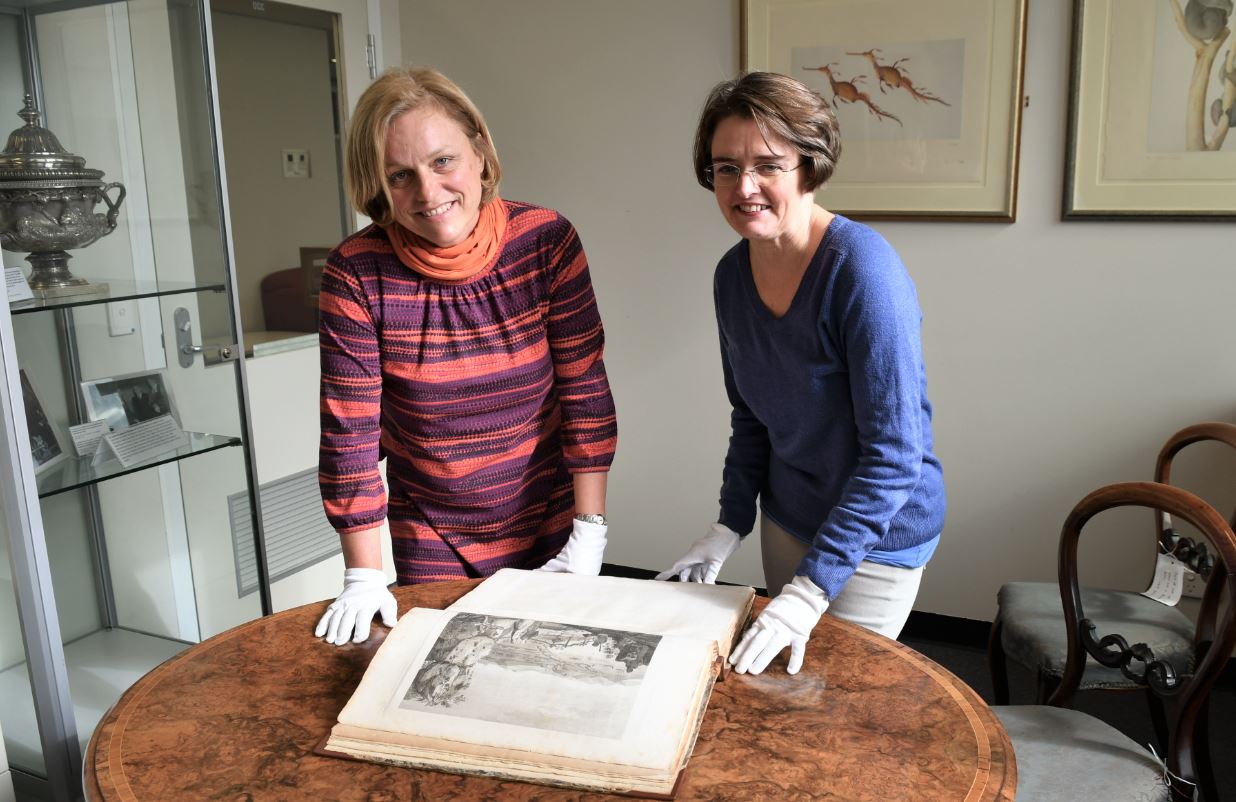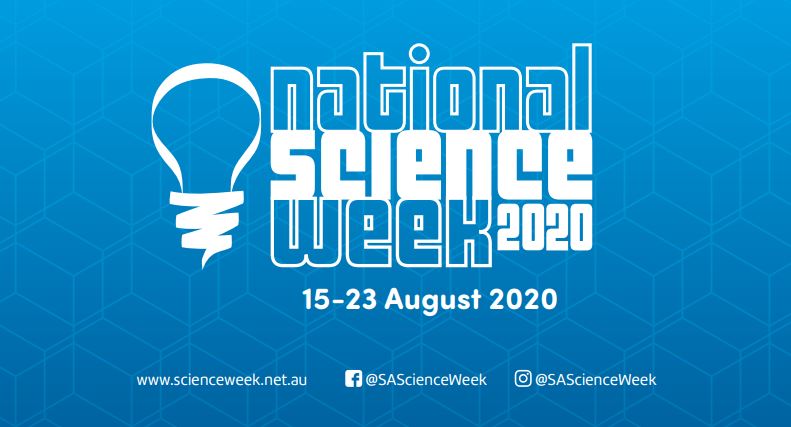
Early French voyages, led by commanders like Baudin, Bougainville, Lapérouse, D’Entrecasteaux, Freycinet, Duperrey and Dumont d’Urville, were the first to name, describe and beautifully illustrate many Australian species.
A special łÔąĎÍřŐľ Science Week event in Adelaide next week will hear from Flinders University’s Dr Danielle Clode and Dr Christèle Maizonniaux about how France maintained an unwavering commitment to research and discovery in the Pacific region and in Australia throughout the turbulent late 18th and early 19th century – forming the basis of some of the earliest cultural connections with Europe.
And while the Matthew Flinders-Nicolas Baudin encounters in SA are well documented locally, a new joint research venture with local and French academics will also be launched at the screening of a documentary at the South Australian from 5.30pm on Tuesday 18 August
“England may have colonised Australia, but for many years it was France that understood it best,” says scientific historian Dr Clode, from the College of Humanities, Arts and Social Sciences. “They took specimens back to French museums where they provided an important foundation for Australian biology and conservation, particularly in botany and marine biology.”
Some of these little-known facts will be outlined at the online ‘ event, where the documentary will be premiered.
“The short documentary brings to life Australia’s fascinating and colourful French history and reminds us of a time when scientific research involved intrepid voyages in tall ships on the high seas, battling scurvy and storms, insects and rats, and hostilities both on board and on shore,” says French language and culture lecturer Dr Maizonniaux, who will co-convene a Q&A at the event.

“There were hundreds of Australian plants and animals which were first scientifically named and described from these voyages, like Tasmanian Blue gum and kangaroo paws or the Red Kangaroo and Tasmanian devil, various bandicoots as well as reptiles and birds.
“They had to build new greenhouses at the Paris Natural History Museum to house all the material, and many of the animals and plants famously ended up in Josephine’s garden and Malmaison.
There is some interesting work being done in Brittany, for example on the viability of Australian plant specimens retrieved from the Lapérouse shipwreck,” adds Dr Clode.
The new video, which includes footage at the Special Collections at the University Library and Flinders Archaeology Laboratory, received an SA Science Week Community Grant.
It will have French and English titles as part of a bilateral project funded by the Bretagne Fellowship from the SA-Brittany Research Collaboration program, and will extend discussions with the Lapérouse Society and further research in Mauritius in 2023 (where Matthew Flinders was imprisoned and Nicolas Baudin died).
This has led to the research on Jeanne Baret – the first woman to sail around the world in the late 1760s – and other explorers such as Kerguelen who left Brittany and the Breton region bound for the Pacific. They inspired writers such as Jules Verne (20,000 Leagues Under the Sea), Pierre Loti and Robert-Martin Leisure, and now Dr Clode to write a new book about Baret, entitled In Search of the Woman Who Sailed The World (Picador), which is due out in October.
“While people in Australia know about the local French voyages in their area, like Baudin in SA, they might not know about the about the ones elsewhere such as Lapérouse and others in Sydney, D’Entrecasteaux and Marion du Fresne in Tasmania and Saint Allouarn and d’Urville in WA), or the important scientific work the French did,” adds Dr Clode.
For example, she says French scientists determined the taxonomic placement of the koala “based on the work seen in London and without a taxonomic placement”; and used samples from the Joseph Banks collection to first describe the genus Eucalyptus.
Catch up with Science Week events:
 The SA Maritime Museum event lines up with at the SA Museum. Matthew Flinders Fellow Professor Mike Lee, from Flinders University and the SA Museum, will be part of the online at the Museum from 4pm-5.30pm on Sunday 23 August. He will cover the Cretaceous period with Flinders colleague Diana Fusco, joining other leading palaeontologists to explain SA’s rich fossil record. Flinders marine microplastics researcher Elise Tuuri is also part of .
The SA Maritime Museum event lines up with at the SA Museum. Matthew Flinders Fellow Professor Mike Lee, from Flinders University and the SA Museum, will be part of the online at the Museum from 4pm-5.30pm on Sunday 23 August. He will cover the Cretaceous period with Flinders colleague Diana Fusco, joining other leading palaeontologists to explain SA’s rich fossil record. Flinders marine microplastics researcher Elise Tuuri is also part of .
The is running through Science week (15-23 August) to the end of the month. Other łÔąĎÍřŐľ Science Week events can be found in the , or the .
łÔąĎÍřŐľ Science Week is one of Australia’s largest festivals. Last year 1.5 million people participated in more than 2050 events around the country, in metropolitan, regional and remote locations.
In 2020, the festival is almost entirely virtual, online, DIY and well-spaced. This means most events, large and small, is open to anyone, no matter where they live.






